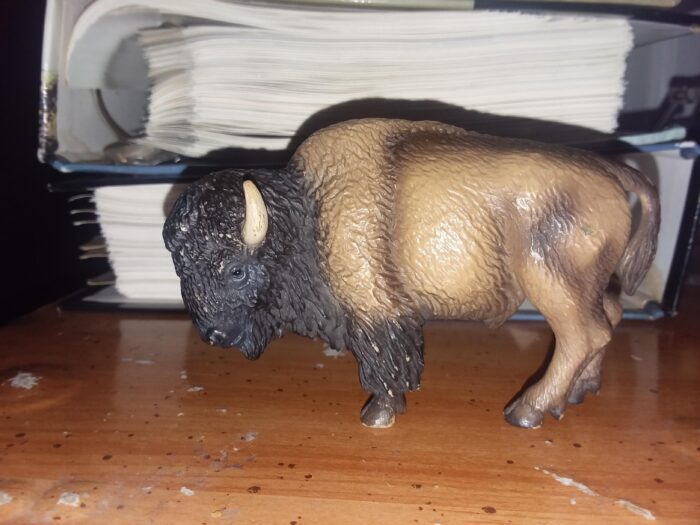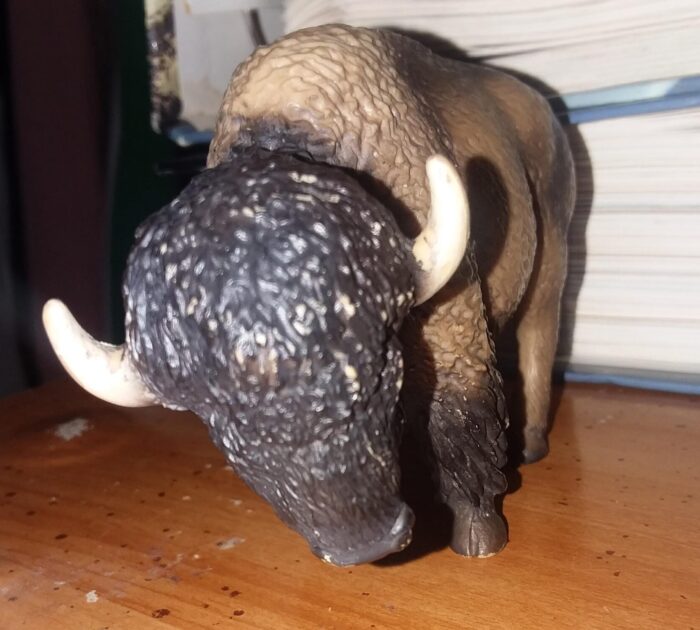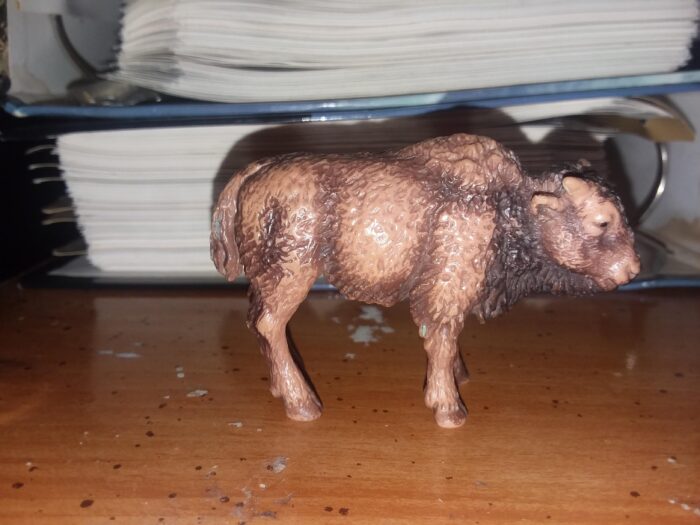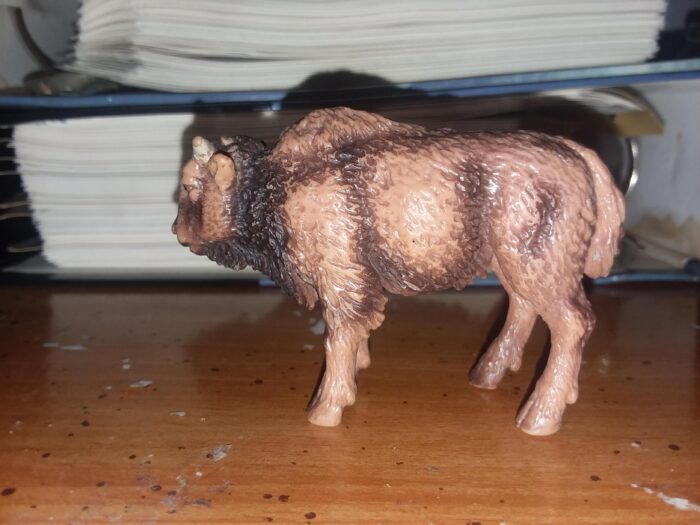Few animals evoke the history of North American wildlife conservation like the American Bison (Bison bison). Prior to colonization, this species had a historical range extending from Eastern and Midwest parts of the United States into the interior of Mexico and Canada. Today it’s more scattered and sparse. The phylogenetic history of American Bison is somewhat convoluted due to ancestral introgression between Bovids like the European bison (Bison bonasus) and yak (Bos grunniens). There are two recognized subspecies of American bison, the plains bison (B.b.bison) and the wood bison (B.b.athabascae). Bison are the largest extant land animal of North America, ranging from 1.5-2m meters tall and weighing 300kg-1000kg; males are the larger sex. The largest ever weighed from the plains bison were over 1,200kg and wood bison are even larger. Approximately 60 million bison once inhabited North America and now only about 31,000 wild bison roam free today, with another 500,000 on private lands. Many bison today are descendants of female cattle-bison hybrids, with approximately 0.5-2% of their DNA belonging to domesticate livestock. After being brought to the edge of extinction, the American bison today are considered ”Near-Threatened” and face issues such as lacking genetic diversity from their small gene pools. Bison are obligate herbivores that graze on grass and are preyed upon by wolves and grizzly bears.

Today, I continue to marathon through some of my older Schleich figures. Here, we have the American bison from Schleich’s Wild Life North America line, released in 2004 along with a calf. The American bison is a species that is currently recognized to possess many high-quality figures available to consumers. Let’s see how Schleich’s old render of this iconic prairie denizen compares to what’s available now.
Starting with the sculpt, it’s clear this figure is of a plains bison due to the shape and size of the head, the position of the hump relative to the front hooves, and the clear presence of the cape around the anterior side of the torso. The wider and woolier head clearly marks this animal as a male. At a height of about 6.6cm, this figure would range within the 1:25-1:28 scale for a typical male plains bison. This figure is very impressively detailed with the correct proportions for the anatomy and the texturing for the fur.

The typical issue with the head size that was previously encountered with the Schleich ostrich and hippo is not apparent here. Between the actual size of the skull and the voluminous hair on top, the plains bison’s head does truly appear that large.

In line with other Schleich figures from this time, the bison figure commits to robust anatomical accuracy by including the genital sheath, though no scrotum is present.

The paint job is equally is pleasing. Most of the body except for the hair near the ankles of the front hooves and the head is a light tan with some darker boundaries. The head and forelimbs are very dark brown. Generally, the scheme is fairly accurate within the variation of plains bison. This paintjob feels very organic and does well to bring out the detail within the sculpt.

The Schleich figure is far more realistic than the 1997 Wild Safari figure that was being sold at the same time. While a good-looking figure in its own respects, the relatively flatter texturing and paint scheme doesn’t allow it to hold up too well against the Schleich release.

Now as for the calf, this figure measures 4.6cm in height. When set to the same scale as the adult, this equates to a shoulder height between 1.15-1.29m. I couldn’t find too many sources explicitly stating the height of newborns, but a comparison based on photos suggests this calf is a bit too large to be used as a newborn. This calf would work better treating it as being around a year old, which was probably the intent given the presence of horns. Generally, all the praise given to the sculpt for the adult applies here.

Again, a very nice job was also done for the paintjob here as well. And the more reddish color is pretty accurate to the color of calves.

Similar to some of the previous figures I’ve reviewed, the 2004 Schleich American bison is definitely what I would consider a future-proof sculpt. I personally believe this figure is in a similar league as the bison figures available now. Nonetheless, Schleich replaced this figure in 2014 with a figure looks that great, but I would say is only a marginal upgrade. The calf was never given an update and was retired in 2010. Those seeking out a high-quality bison calf otherwise have limited options beyond secondhand sellers.
Disclaimer: links to Ebay and Amazon on the AnimalToyBlog are affiliate links, so we make a small commission if you use them. Thanks for supporting us!



